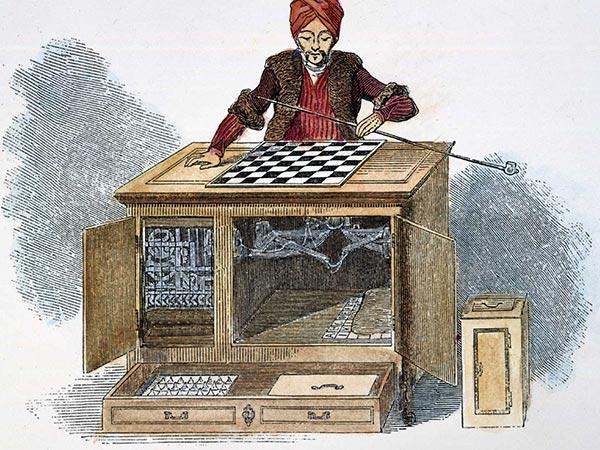
The 10 Most Important Moments In Chess History
There is arguably no other game with the timeless staying power and global reach of chess. Unlike most of the other games and sports played today by millions around the world, chess has a history that spans millennia.
While chess has changed a lot since its invention, the basics of the game have remained recognizable throughout its long lifetime. From its ancient origins, chess has evolved to appeal to modern players of all cultures and ages.
With even conservative estimates placing the total number of chess players today at half a billion people, there is no doubt that chess is the king of board games.
How did chess spread and grow to its current popularity? One moment at a time.
Take a look at the 10 most important moments in chess history, and let us know your favorite moments in the comments.
- Chess is Born
- Meet the Mad Queen
- First Chess Tournament
- The Mechanical Turk
- The Staunton Pieces
- Chess Clocks
- First World Champion
- Fischer and Kasparov
- Computers
- Magnus Era
10. Chess is Born: ~600 AD

Around 600 AD, the Arabic game shatranj developed from the Indian game chaturanga, becoming the first game identifiable as chess.
Shatranj was played on an 8x8 board and featured 16 pieces on each side, similar to today's chess: the soldier (pawn), the horse (knight), the elephant (a weaker bishop), the chariot (rook), the counselor (a much weaker queen), and the shah (king).
The game ended with checkmate, or if all the pieces of one army (except the king) were captured.
9. Meet the Mad Queen: ~1450
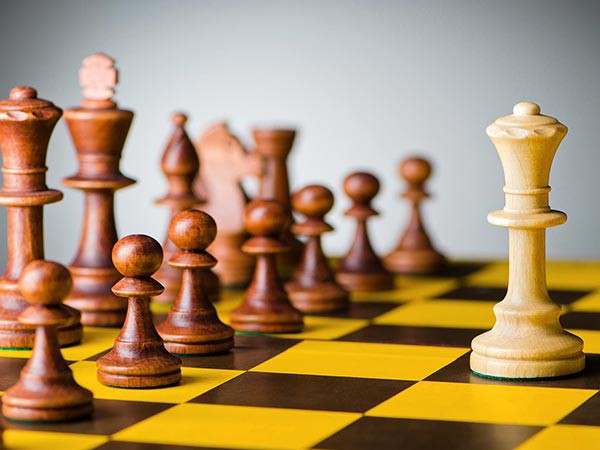
The mad queen concept was introduced in the XV century
By the middle of the second millennium, chess had already evolved considerably from its shatranj roots. Pawns were now allowed to advance two squares on their first move, and the familiar light and dark checkered pattern was standard for the board.
It wasn’t until around 1450, though, that chess saw its most radical change: the mad queen. Hoping to make the game faster and more enjoyable, some players tweaked the rules to allow the queen to move as far as she wanted -- in any direction, diagonally, vertically, or horizontally -- combining the movements of the bishop and the rook.
This was a huge departure from the original rules limiting the queen to moving one square diagonally. The change was so revolutionary that the French called the new game “ésches de la dame enragée,” or “chess of the enraged lady” -- the “mad queen.”
8. First Chess Tournament: 1575
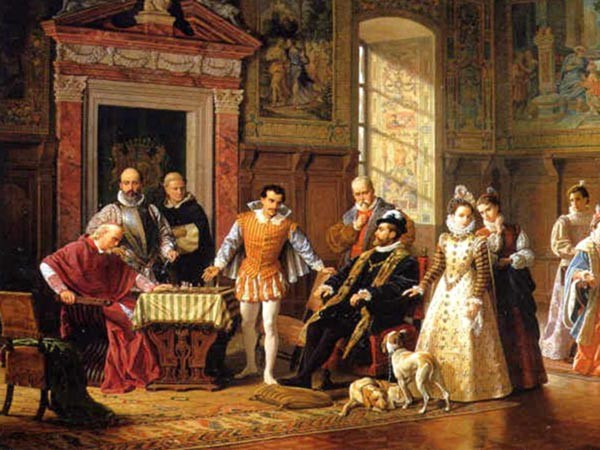
The first formal chess tournament was organized in 1851 and witnessed the "Immortal game"
Today, tournaments are an integral part of chess. Professional players make their living in tournaments, and even beginners enter local and online chess tournaments for fun and competition.
Chess tournaments, though, haven’t been around forever. The first informal international chess tournament took place when the Italians Leonardo da Cutri and Paolo Boi traveled to the court of Philip II in Madrid to play Ruy Lopez and Alfonso Ceron of Spain.
Ruy Lopez had already beaten both of them in several earlier games, and it seemed like an easy victory for the Spanish after they won the first two games. The Italians, though, won the next three in a row to secure victory in the world’s first chess tournament.
7. The Mechanical Turk: 1770

In 1770, the Hungarian inventor Wolfgang von Kempelen unveiled the Mechanical Turk, an automatic chess-playing “machine” that entertained and bewildered audiences by defeating strong human opponents.
Originally designed by von Kempelen to impress an Austrian empress, the Turk had cabinets that could be opened to reveal an impressive array of gears and cogs, ostensibly to power the mechanical chess mind.
In the 84 years that the Turk wowed audiences in Europe and the Americas, the Turk beat nearly all its challengers. Famous statesmen Napoleon Bonaparte and Benjamin Franklin were among the humans defeated by the mysterious machine.
Of course, the Mechanical Turk was an entertaining hoax. The machine was controlled by a concealed human chess player who moved the pieces with magnets. Several strong chess masters had hidden inside the Turk through the decades it was in operation. Despite this trick, the Turk spread the popularity of chess and was a spiritual precursor to the first real chess machines -- computers.
6. The Staunton Pieces: 1849
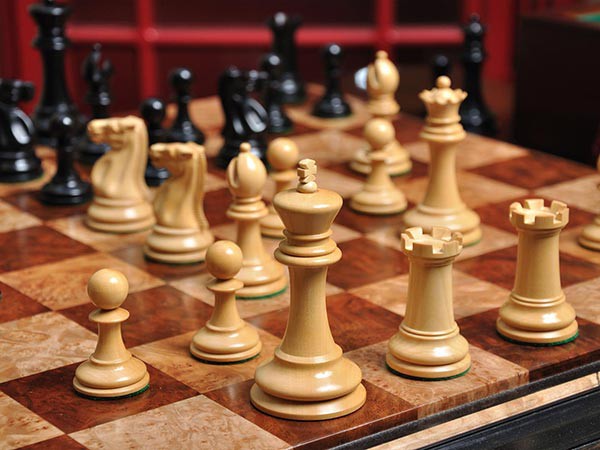
Howard Staunton, from a really strong player, to chess pieces creator.
The Englishman Howard Staunton was arguably the strongest player in the world from 1843 to 1851. Staunton, a passionate chess promoter, advocated a specific style of chess pieces.
Originally designed by the chess journalist Nathaniel Cook, the pieces were enjoyable to play with due to their easy piece recognition, stable bases, and pleasing design.
These pieces came to be called the "Staunton" style, which is now the official design of chess pieces used around the world.
5. It’s About Time: 1861
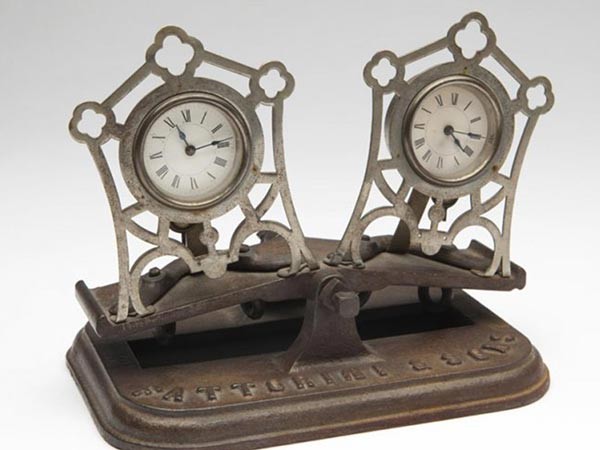
Chess games in the early 1800s sometimes lasted more than 14 hours! There were no time limits, and losing players would try to tire out their opponents.
In 1861, the first chess timers were introduced using sand hourglasses with three hours of sand each. Those evolved later into "tumbling" chess clocks (patented in 1884), where one clock would start when the other stopped.
The first electronic clocks weren't introduced until 1964. More accurate clocks led to faster time controls, including the now popular lightning chess where each player has only one minute to make all of their moves!
While chess clocks were once expensive and time-consuming to make, nowadays you can download a fully functional free chess clock on your Android or iOS smartphone in seconds.
4. First World Champion: 1886

The Austrian-American chess player William Steinitz became the first official world chess champion in 1886 when he defeated Johannes Zukertort in a match for the undisputed championship.
Steinitz’s biggest contribution to chess, however, was his advancement of the game’s strategic understanding. Before the rise of Steinitz, chess was played in a romantic, hopeful, and daring style full of reckless attacks.
In 1873, three years before his match with Zukertort, Steinitz unveiled a more positional style of chess, with a focus on pawn structure, the active bishop pair, and knight outposts. His attacks were only launched after careful preparation.
While some contemporaries called his ideas cowardly at first, those ideas earned Steinitz the nickname “the father of modern chess.”
3. Fischer and Kasparov: 1972 and 1985
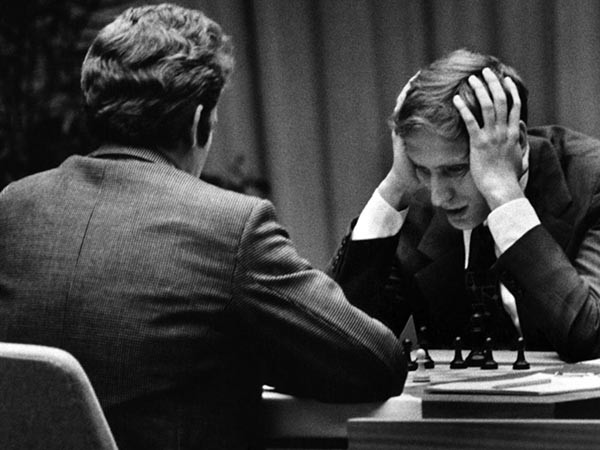
Bobby Fischer against Boris Spassky in their world chess championship match.
Bobby Fischer learned the rules of chess at the age of six, and when he was 11 he “just got good,” according to Fischer himself. Six months after he turned 15, Fischer was a grandmaster, setting the record at the time for youngest GM ever.
Fischer’s ascendancy peaked in 1972, when he defeated Boris Spassky and the Soviet chess monolith to win the world championship in what is still considered the most famous chess event ever.
Three years later, though, Fischer disappeared from competitive chess and public life, only to reappear 20 years later to beat Spassky in a rematch. Fischer promptly withdrew from the spotlight once again, avoiding the chess world until his death in 2008 at age 64 -- the number of squares on a chessboard.
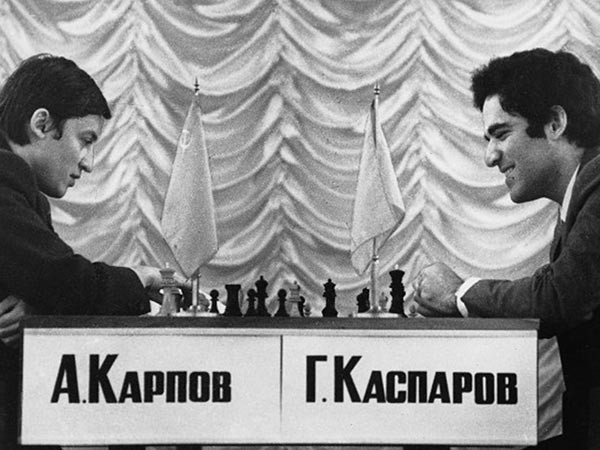
After Bobby Fischer disappeared in 1975, chess lacked a superstar until the charismatic Garry Kasparov appeared on the world chess stage 10 years later.
Kasparov became the youngest world champion ever at age 22 after defeating Anatoly Karpov, and remained the undisputed strongest chess player for nearly 22 years. His peak rating of 2851 stood as the highest in history until it was surpassed by the current world champion Magnus Carlsen in 2013.
Kasparov enjoyed widespread fame as the face of chess for decades before retiring in 2005 to focus on Russian politics and charity projects.
Fischer and Kasparov are almost universally considered two of the strongest and most famous world champions of all time.
2. Computers Win: 1997
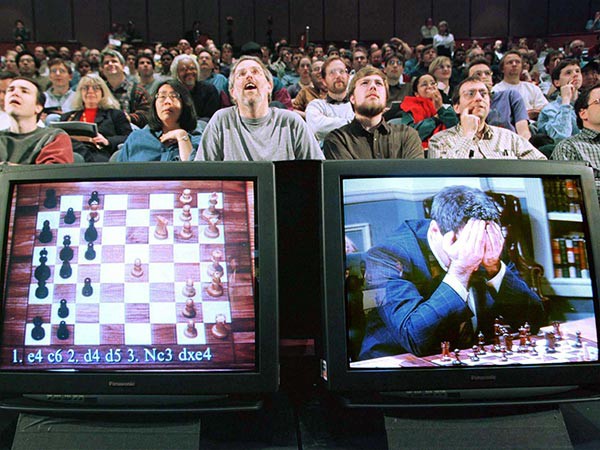
IBM shocked the world defeating for the first time, the World Chess Champion, Garry Kasparov.
In 1989, the computer company IBM hired a team of Carnegie Mellon engineers to create a computer capable of beating the world chess champion.
That champion was Garry Kasparov, who said “there is still a long way to go before a human on his or her best day is unable to defeat the best computer.”
Indeed, in 1989, Garry Kasparov defeated IBM's "Deep Thought" computer in a 6-game match. The next version, "Deep Blue,” also fell to Kasparov in 1996.
But in the 1997 rematch, Deep Blue, then capable of evaluating 200 million chess positions per second, defeated Kasparov by a score of 3.5 to 2.5.
Though Deep Blue made history, today's modern chess engines running on ordinary computers could easily defeat Deep Blue. While they cannot calculate as many positions, today’s engines evaluate more efficiently and accurately.
Chess software today is far stronger than human chess players. The human world champion Magnus Carlsen is rated 2877, while the best computer program (currently Stockfish) is rated 3290.
1. The Magnus Era: 2013
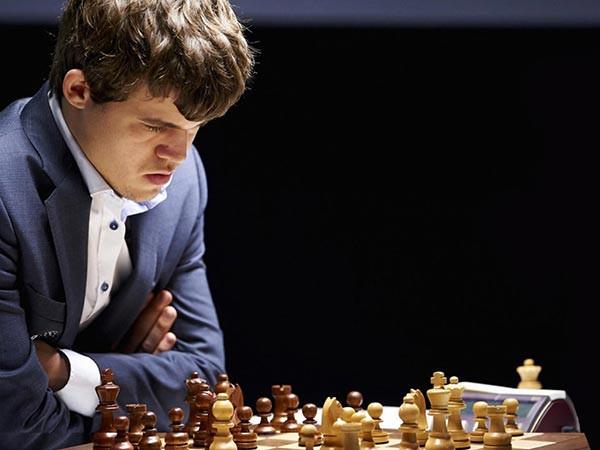
Welcome to the era of Magnus Carlsen, the Norwegian superstar.
Magnus is undeniably one of the most prodigious chess figures in the history of the game.
He's the highest rated player ever. He became a grandmaster at age thirteen. In 2013, Carlsen defeated GM Viswanathan Anand to win the world chess championship. And he's a fashion model.
Carlsen plays a well-rounded game, with a variety of openings, blistering tactical play, unfathomable positional understanding, insane endgame calculation, and a ridiculous ability to defend almost any position.
Did we mention that he is just 23 years old? Carlsen has been the top-ranked chess player in the world since he was a teenager, and he’s a safe bet to remain the world’s dominant chess figure for years to come.
What are your favorite moments in the history of chess? Let us know in the comment section.
More information about the History of Chess:



